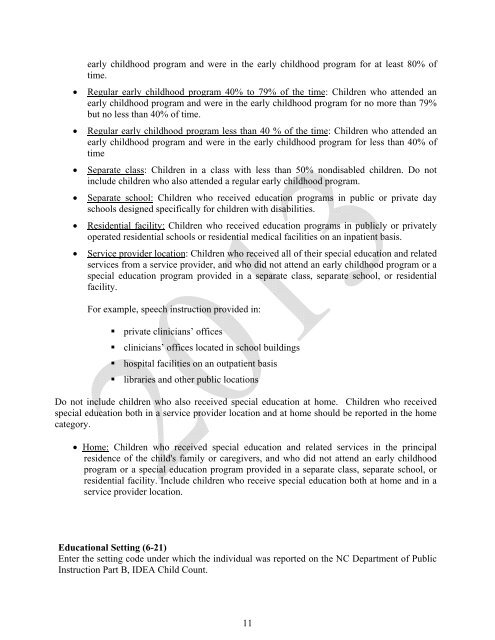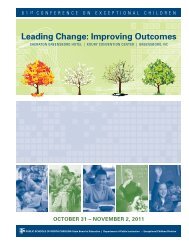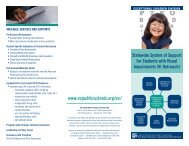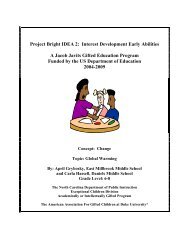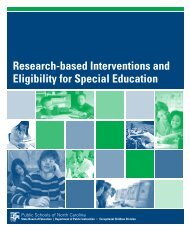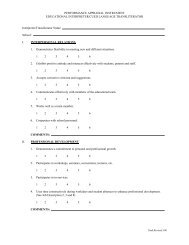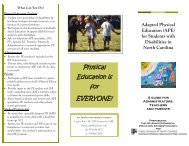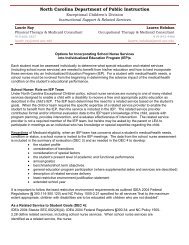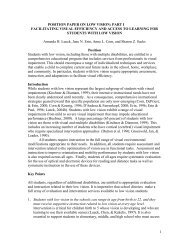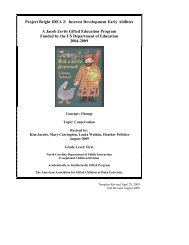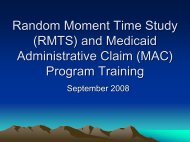Deaf-Blind Child Census - Exceptional Children
Deaf-Blind Child Census - Exceptional Children
Deaf-Blind Child Census - Exceptional Children
Create successful ePaper yourself
Turn your PDF publications into a flip-book with our unique Google optimized e-Paper software.
early childhood program and were in the early childhood program for at least 80% oftime.• Regular early childhood program 40% to 79% of the time: <strong>Child</strong>ren who attended anearly childhood program and were in the early childhood program for no more than 79%but no less than 40% of time.• Regular early childhood program less than 40 % of the time: <strong>Child</strong>ren who attended anearly childhood program and were in the early childhood program for less than 40% oftime• Separate class: <strong>Child</strong>ren in a class with less than 50% nondisabled children. Do notinclude children who also attended a regular early childhood program.• Separate school: <strong>Child</strong>ren who received education programs in public or private dayschools designed specifically for children with disabilities.• Residential facility: <strong>Child</strong>ren who received education programs in publicly or privatelyoperated residential schools or residential medical facilities on an inpatient basis.• Service provider location: <strong>Child</strong>ren who received all of their special education and relatedservices from a service provider, and who did not attend an early childhood program or aspecial education program provided in a separate class, separate school, or residentialfacility.For example, speech instruction provided in:• private clinicians’ offices• clinicians’ offices located in school buildings• hospital facilities on an outpatient basis• libraries and other public locationsDo not include children who also received special education at home. <strong>Child</strong>ren who receivedspecial education both in a service provider location and at home should be reported in the homecategory.• Home: <strong>Child</strong>ren who received special education and related services in the principalresidence of the child's family or caregivers, and who did not attend an early childhoodprogram or a special education program provided in a separate class, separate school, orresidential facility. Include children who receive special education both at home and in aservice provider location.Educational Setting (6-21)Enter the setting code under which the individual was reported on the NC Department of PublicInstruction Part B, IDEA <strong>Child</strong> Count.11


